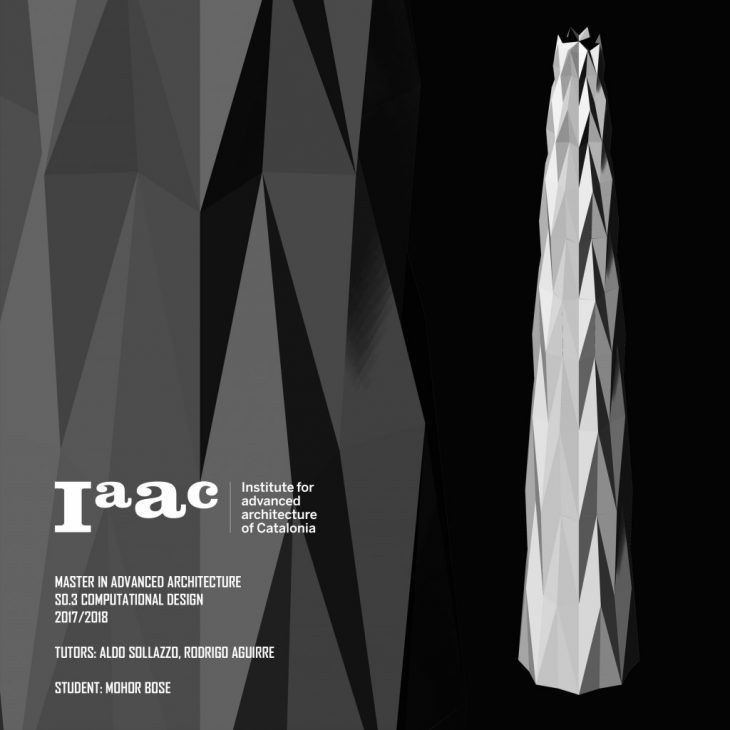RECREATING A FACADE DESIGN USING GRASSHOPPER
The Brief: The main task of this exercise is to decode the logic of complex facade solutions, defining the computational system behind them.
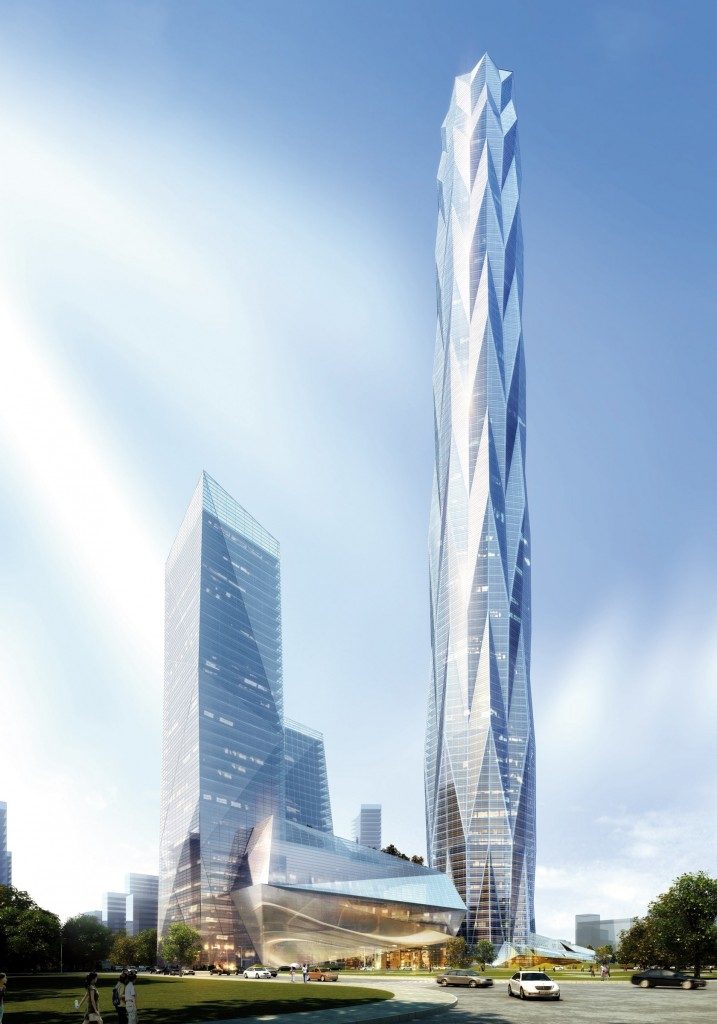
Project: Chengdu Greenland Towers, Sichuan, China.
Architect: Adrian Smith & Gordon Gill Architecture.
Concept:
The Chengdu Towers form is shaped by alternating 16-sided star-shaped polygon levels that taper to the top. The alternating arms of the facade make the vertical lines have different normals, thereby creating a non-planar triangulated modular surface.
Step 1: The Base Geometry
Make the star polygon by weaving and interpolating the control points of two octagons. The two have the same centroid but different radii and one is rotated 22.5 degrees.
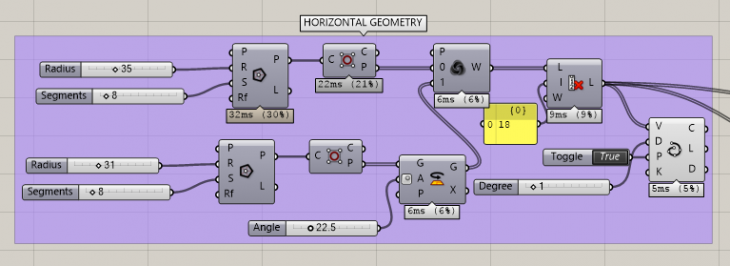
Script for each 16-sided base plan
Step 2: The Different Levels
The script is repeated but the radii is switched so that the inner and outer edges of the star are alternating in each adjacent level. Then, the process is repeated while reducing the radii proportionally to achieve the taper.

Base Plan for Alternate Geometry

16-sided Base Geometries of different levels of the facade
Step 3: The Vertical Lines
Each polygon control point is joined to the nearest one directly above and below it. The control points of the outer edges of the star polygon on the bottom are also further connected to the point diagonally above on either side. This divides the facade into non-planar triangulated panels.
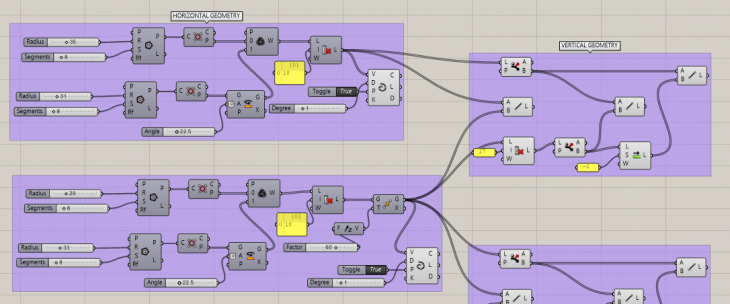
Script for Vertical Lines of the facade
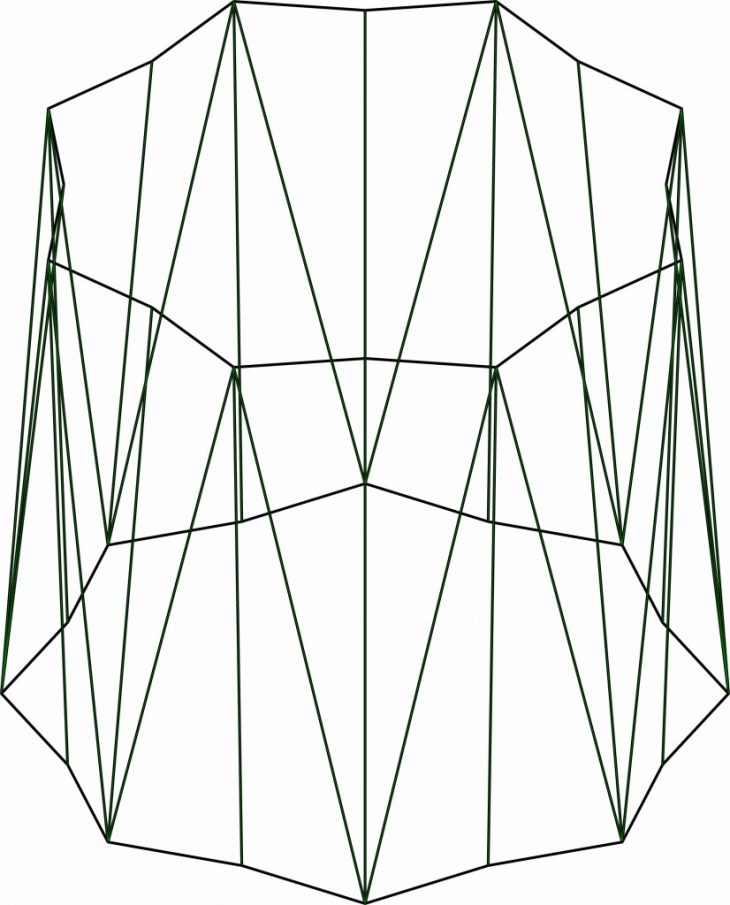
Vertical lines of the facade
Step 3: Adding the Cap and Crown
To create the roof with height variations, one set of points is moved up in the Z-axis before interpolating the weave. To cap the frame, a surface is made between the control points of the last polygon and its centroid.

The Roof Script
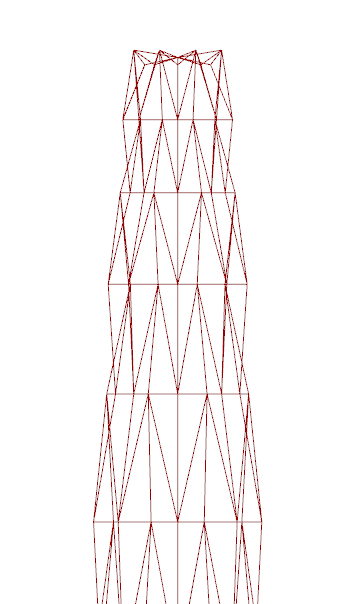
Facade Design and Roof Structure
Step 3: Baking in Rhino
The vertical lines created in step 3 and the crown and cap from step 4 are then baked. Polysurfaces are drawn from the baked lines to obtain the final model.
